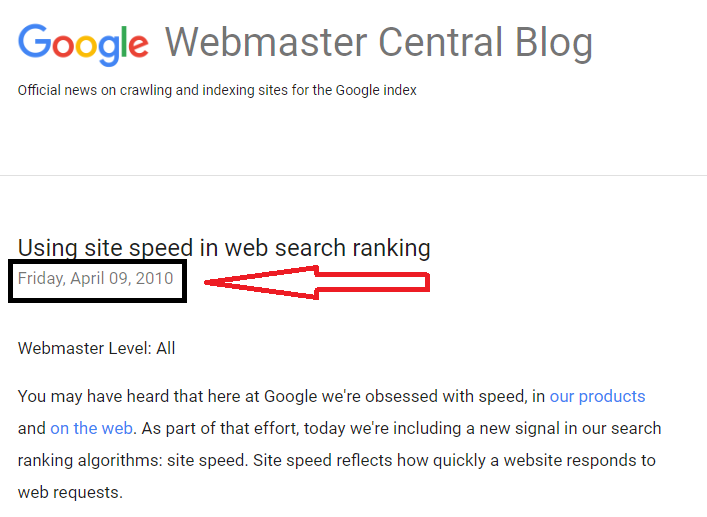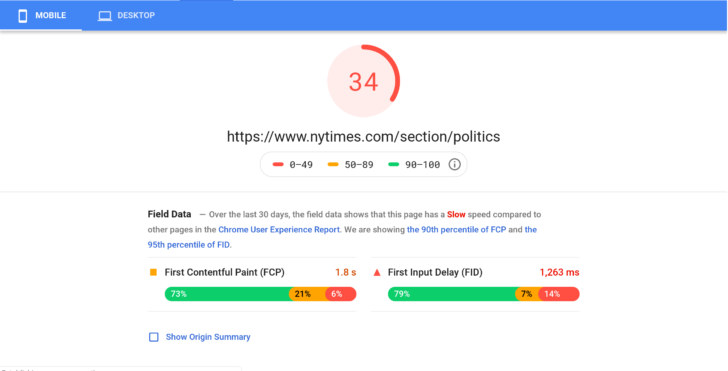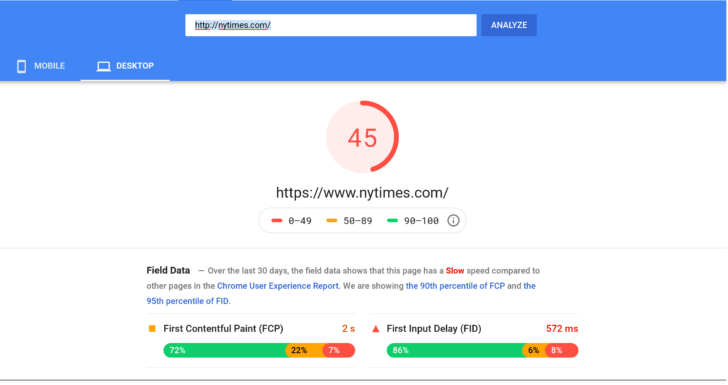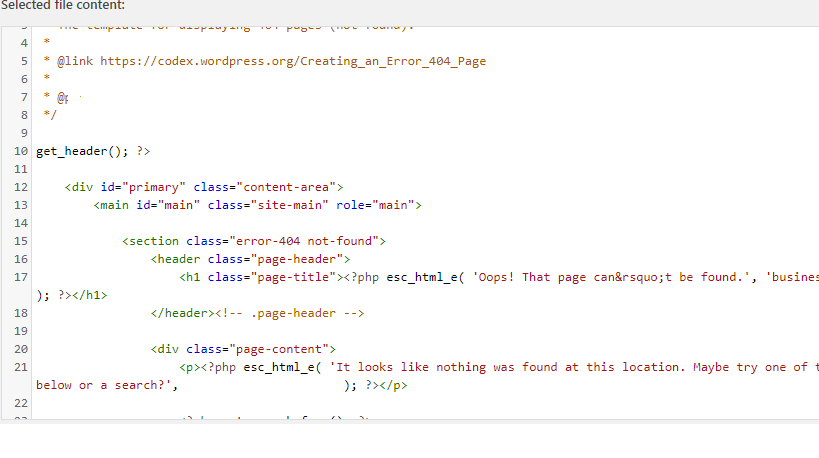Page speed optimization should be at the core of your SEO strategy. Your page speed is just as important as site speed is to SEO. Here, page speed should not be mistaken for website speed.
What is page speed optimization and how important is this factor to your overall website ranking? Your page speed is technically how long it takes the content of a specific page on your website to load completely – or in more technical terms, “time to first byte”, which the time it takes for your client’s browser to get the first byte of data from your web server. Just like site speed which measures how fast a sample of page views on your website, page speed is critical to your search rankings.

Several reports are saying, including Google admitting in 2010, that site speed due to the high relevance of page speed, is used as a web search ranking factor. Now that this is the case, how can you optimize page speed and improve your search rankings? Read on to learn more.
Site speed as Google’s page ranking signal
Since Google’s admission to the importance of page speed, we’ve seen several tutorials on how to understand page speed and improve it for your website. Given Google’s reputed tight-lipped stance on what makes for their ranking factors, it’s understandable to see the level of importance users have paid to page speed since the announcement.
In my view, page speed would be critical to Google owing to the fact that good user experience is one of its chief aim for its users. It’s now important to take measures to get your page speed right by focusing on the following areas.
1. Time to first byte (TTFB)
An area to focus on to get insight on how to improve your page speed is how long it takes your browser to receive the first byte of information from your web server. This is what is technically known as “time to first byte”.
A perfect tool to evaluate this is Google’s PageSpeed Insights, which measures reports from the FCP (First Content Paint) and DCL (DOM Content Loaded) by polling data from CrUX (Chrome User Experience Report).

Running a test using Google’s PageSpeed Insights doesn’t only provide you with site speed data but also includes suggestions on areas to work on to improve speed. An example is a test on NYTimes/section/politics which returned 45% for the desktop and 34% for mobile – which is actually more important.

2. Your web hosting
While most would go ahead and start tweaking their web design and looking at what plugins may cause a lag in page speed, the culprit is not always obvious.
Your web host would play the biggest role in how fast the pages of your website loads. You can run a lean one-page website on some hosting services and still come short on the page speed or website speed.
According to a guide on website speed published by Kinsta, mediocre web-hosting contributes significantly to how fast a website loads. Factors such as geographic proximity to users (cloud hosts are superior in this regard), the volume of clients on a single server and the size of a server’s RAM and bandwidth limit all contribute to the performance of a website hosted on any giving server.
Since 74% of users will never return to a website that takes longer than 4 seconds to load, a poor hosting provider could cost you thousands of dollars in lost revenue opportunities. This is not counting the loss of traffic as a result of negative search rankings from poor SEO.
3. Redundant and inactive plugins
Inactive plugins on your website are often serious culprits in slow site speed.
Although, the reason plugins have the option to “activate” and “deactivate” them is to make them dormant while you decide whether they may serve any need in the future, rather than deleting them. However, the most efficient way to prevent plugins that are not being used from dragging down your website is to remove it.
To prevent plugins from unnecessarily slowing down pages of your website, you can consider taking the following measures:
- Only install plugins when they are absolutely necessary
- Clear your website cache and Minified CSS/JS after removing a plugin
- If a plugin hasn’t been active for three months, consider removing it from your website
- Only install plugins that are up to date and marked as compatible with your WordPress version
Aside from causing lags in your website’s page speed, inactive plugins may cause vulnerability to the security of your website leaving you exposed to attackers and hackers. This undoubtedly will negatively affect your website’s SEO and rankings, costing you traffic and revenue.
4. Clean your website codes
Another area you should look out for when dealing with page speed is the codes that make up your website. While this is a more technical exercise and is better handled by technical professionals, taking care of your website codes and ensuring nothing is off can help you gain some speed.

When investigating website codes that could affect site speed, look into these areas:
- JavaScript
- CSS
- HTML
- Theme files
Poorly configured theme files, for example, may conflict with your users’ browser, thereby negatively affecting how fast your website loads. Below are some aspects you may want to investigate to make sure your website codes are in proper shape:
- Enable dynamic caching
- Minify JavaScript and CSS files
- Avoid making changes to parent theme files and opt for child theme instead
5. Content delivery network (CDN)
Using a content delivery network or content distribution network, commonly known as CDNs can significantly reduce the time it takes to fully load pages of your website. When users are browsing the internet, proximity to your server can affect how fast content is delivered to them.
What CDN does is host your website content in the cloud, and let the nearest server to your clients handle the delivery of the content when they access your website. Since geographic proximity is also a factor in the speed of content delivery, using a CDN takes care of this and eliminates the associated delays that come with loading a website’s content from a distant location.
CDNs also utilize caching to reduce your hosting bandwidth, making room for smooth content delivery and rendering. Plus, it also helps prevent downtimes with your website.
When you opt for a CDN, the following aspects of your website’s content are taken care of:
- Images and videos on your server
- Your website JavaScript files
- HTML pages
- Stylesheets
Apart from speeding up your website and helping you to improve your SEO, utilizing a CDN can also be beneficial in the following areas:
- Security: Your website can be protected from hackers and random attacks targeting your website
- Mitigation against DDOS attacks: Distributed Denial of Service (DDOS) attacks is the most common form of hacks launched against websites to date when a malicious agent tries to disrupt the service of your website. CDNs can fortify your website against this common attack.
- Increases content redundancy and availability: Since CDNs keep content distributed, pages of your website will remain active and accessible should there be a malware malfunction or spike in traffic
6. Images
Images are important components of every webpage. And roughly nine out of ten pages on a website would include at least an image. It also goes without saying that images consume the most bandwidth on a website.
To boost your website page speed and enjoy solid SEO dividends, you should optimize images on your website to consume as little bandwidth as possible. Heavy and oversized images are among the top reasons a website may experience slow page speed.
Images that are wider than the content area of your website would overlap on the screen, causing the user experience to suffer. Getting your image size right can make a huge difference in how your page loads.
6a. Image compression
According to findings reported by Blake Hawksworth for effective inbound marketing on how to improve website page speed, it is revealed that –
“Compression has the potential to have the largest impact on page speed, as on average, images make up a total of 65% of a website’s weight.”
This further solidifies the fact that getting your image size and compression right can have the biggest impact on your page speed optimization.

In order to see gains on your SEO, improving page speed by compressing images on your website should be a top priority. To get this right, use image compression plugins such as WP Smush (for WordPress users) or Mass Image Compressor to reduce the file size of images that are uploaded to your website. On image width, ensure you’re not uploading images that are wider than the frame of your website content display area.
6b. Google’s guidelines for image optimization for page speed
Another reliable way to ensure images are well optimized for page speed on your website is to follow Google’s guidelines for image optimization. Realizing the traffic generated by images and their impact on a website’s page speed, Google decided to release a set of guidelines for webmasters to adhere to meet content efficiency and page speed optimization.
And since Google is releasing a set of guidelines for image optimization, it’s safe to assume that images would have significant outcomes on a website’s rankings. Since the scope of this article would not allow me to go over everything in Google’s image optimization guidelines, I recommend visiting the resource for consultation. Rather, I’ll share a breakdown of the most important factors required in the “image optimization checklist”, as recommended by Google, in the next point.
6c. Image optimization checklist
Google declares that there is no definitive answer for how best to compress an individual image, but there are “well-developed” techniques and algorithms that can help see improvements in size reduction. Below are the tips they shared:
- Prefer vector formats: to meet the demands of a multi-device and high-resolution world, vector images which are resolution and scale-independent are the best option.
- Minify and compress SVG assets: Ensure your servers are configured to apply GZIP compression for SVG assets.
- Pick the best raster image format: pick images based on the most-suitable functional requirements.
- Experiment with optimal quality settings for raster formats: Google recommends dialing down the “quality” settings and you’ll see significant byte savings.
- Remove unnecessary image metadata: Google concludes that many raster images contain unnecessary metadata such as geoinformation, camera information, etc. They recommend using appropriate tools to strip this data.
- Serve scaled images: Google recommends that you resize your images on the server and ensure that the “display” size is close to the “natural” size of the image. Pay more attention to large images because they account for the largest overhead when resized.
- Automate: Google recommends investing in automated tools that will ensure all image assets are always optimized.
Conclusion
Page speed is, as we’ve seen, an important factor in Google’s SEO rankings. And from this article, it’s obvious that getting image optimization right takes the lead in improving your website’s page speed. Try the tips I’ve shared in this article and let me know how your page speed has improved, and if it translates to better rankings for you.
Ayodeji is the founder and CEO of Effective Inbound Marketing, a leading digital agency. He recently acquired BoostMyMedia.com to help clients in the online reputation area.
The post Page speed optimization: Six areas to focus on for better SEO results appeared first on Search Engine Watch.
from SEO – Search Engine Watch https://ift.tt/2WSCiIZ
via IFTTT

No comments:
Post a Comment